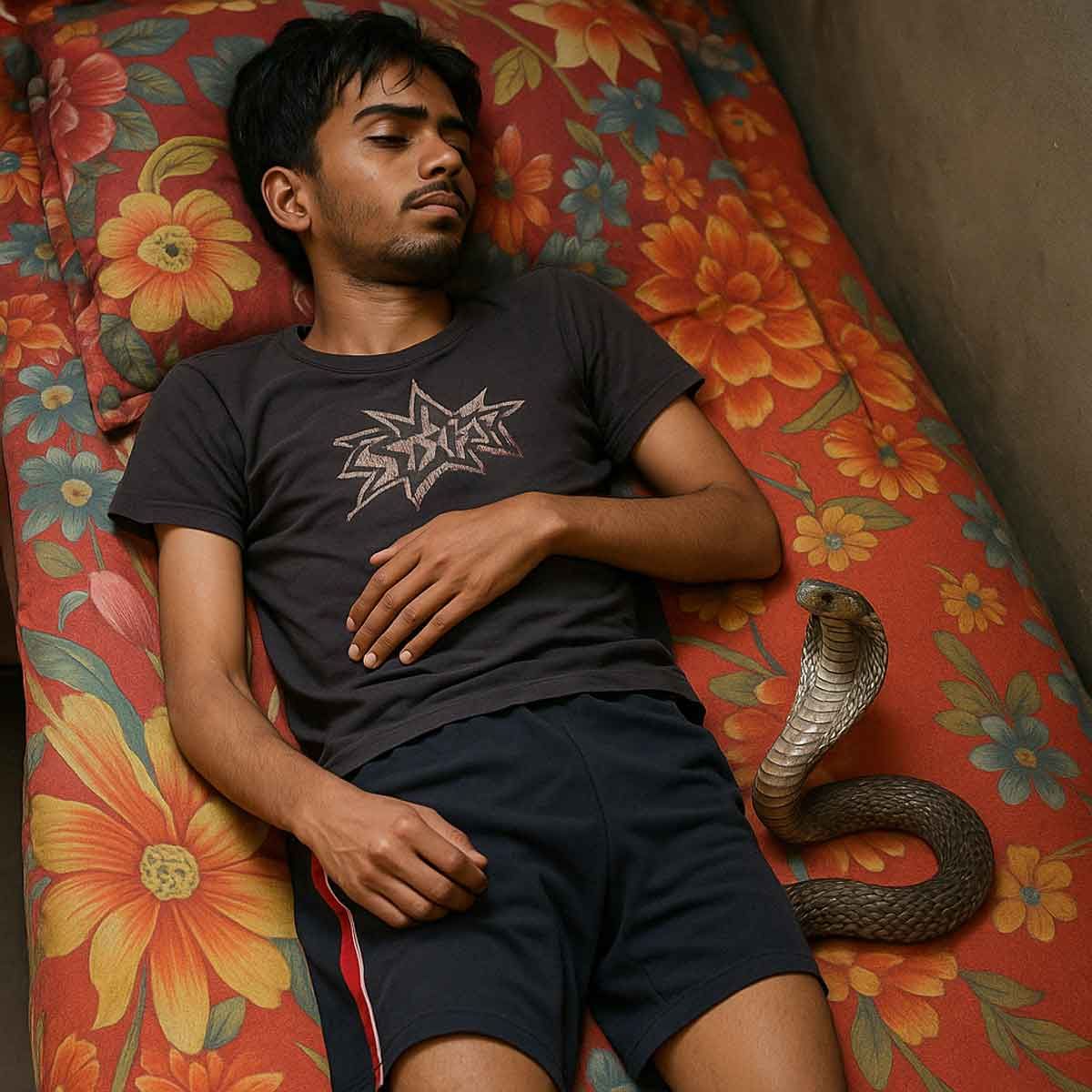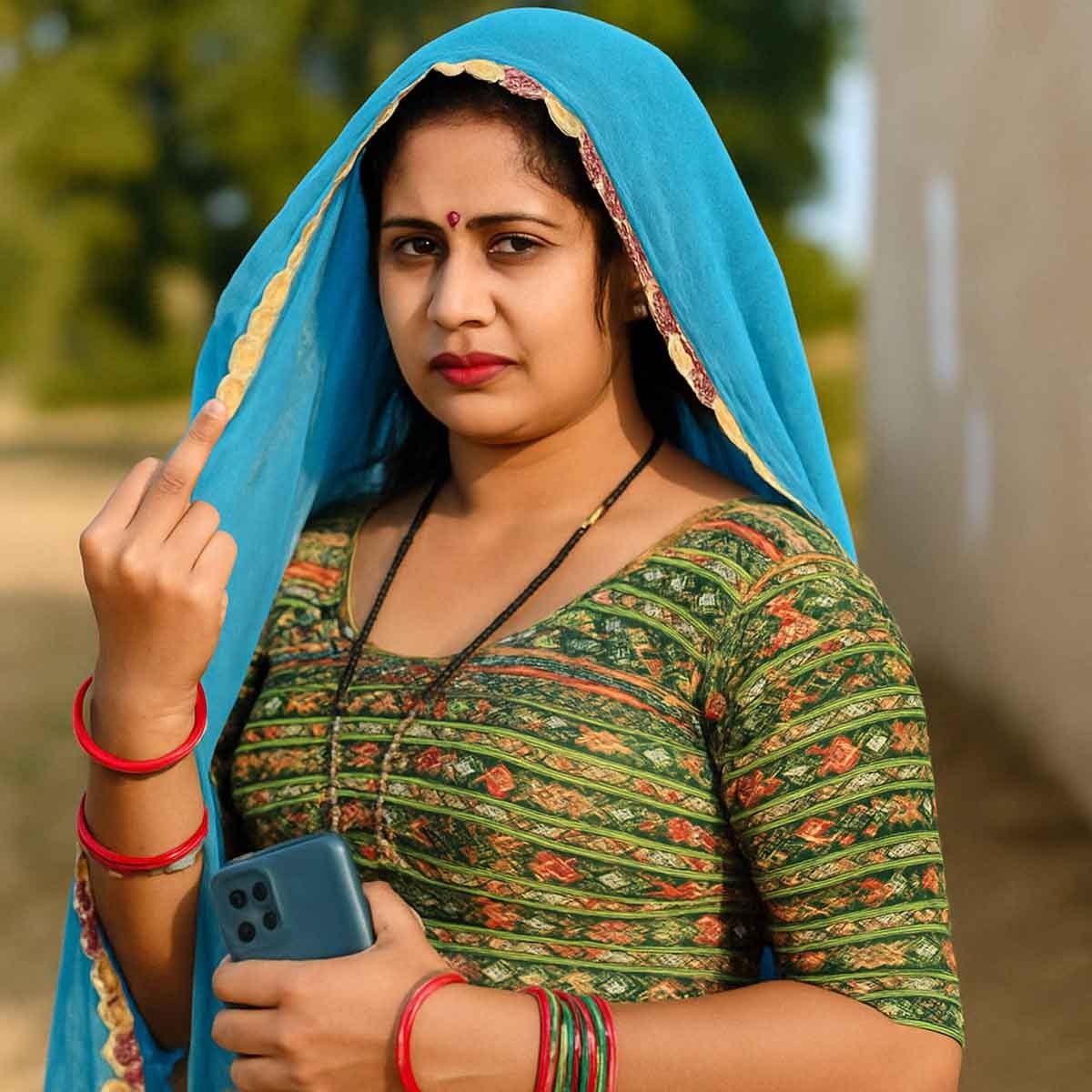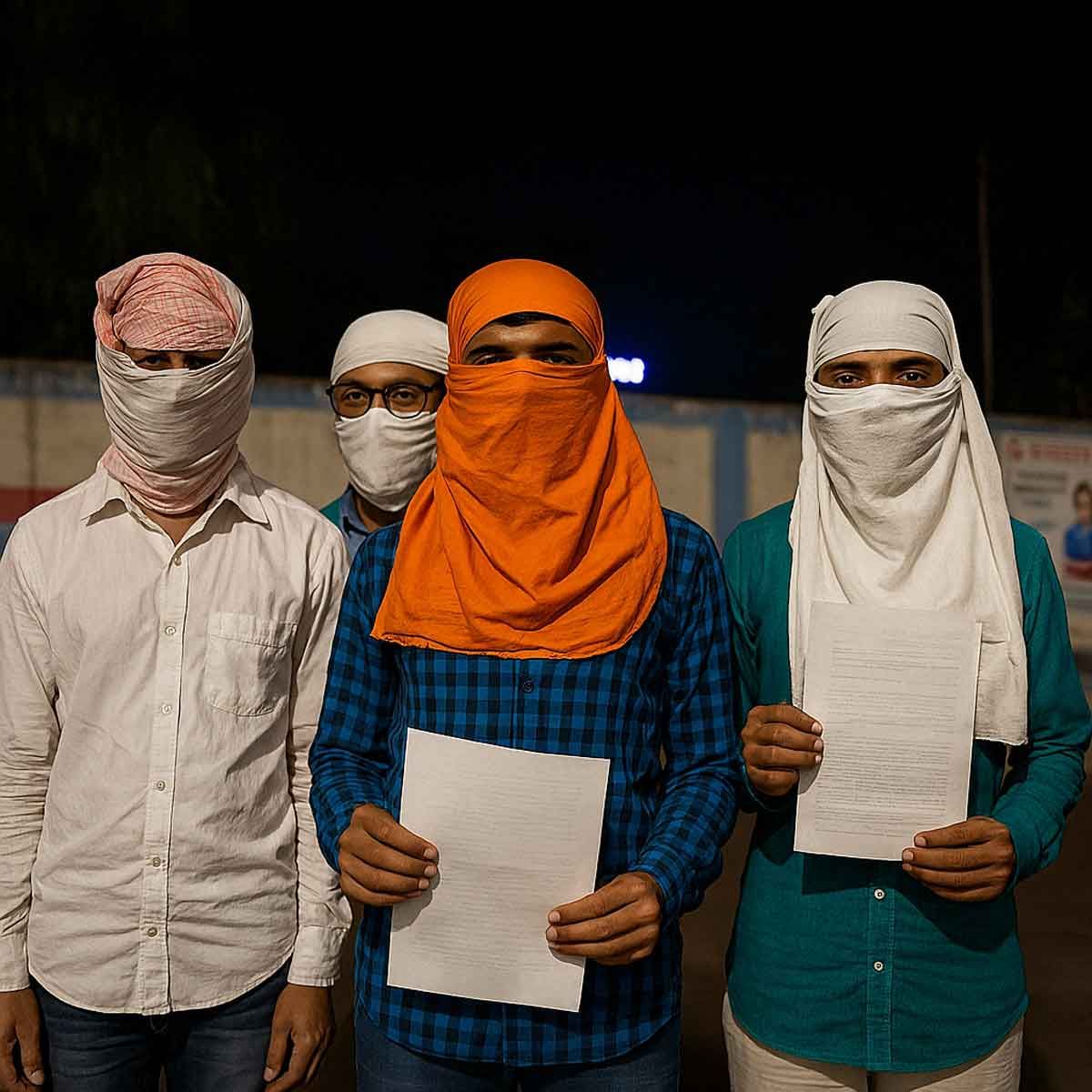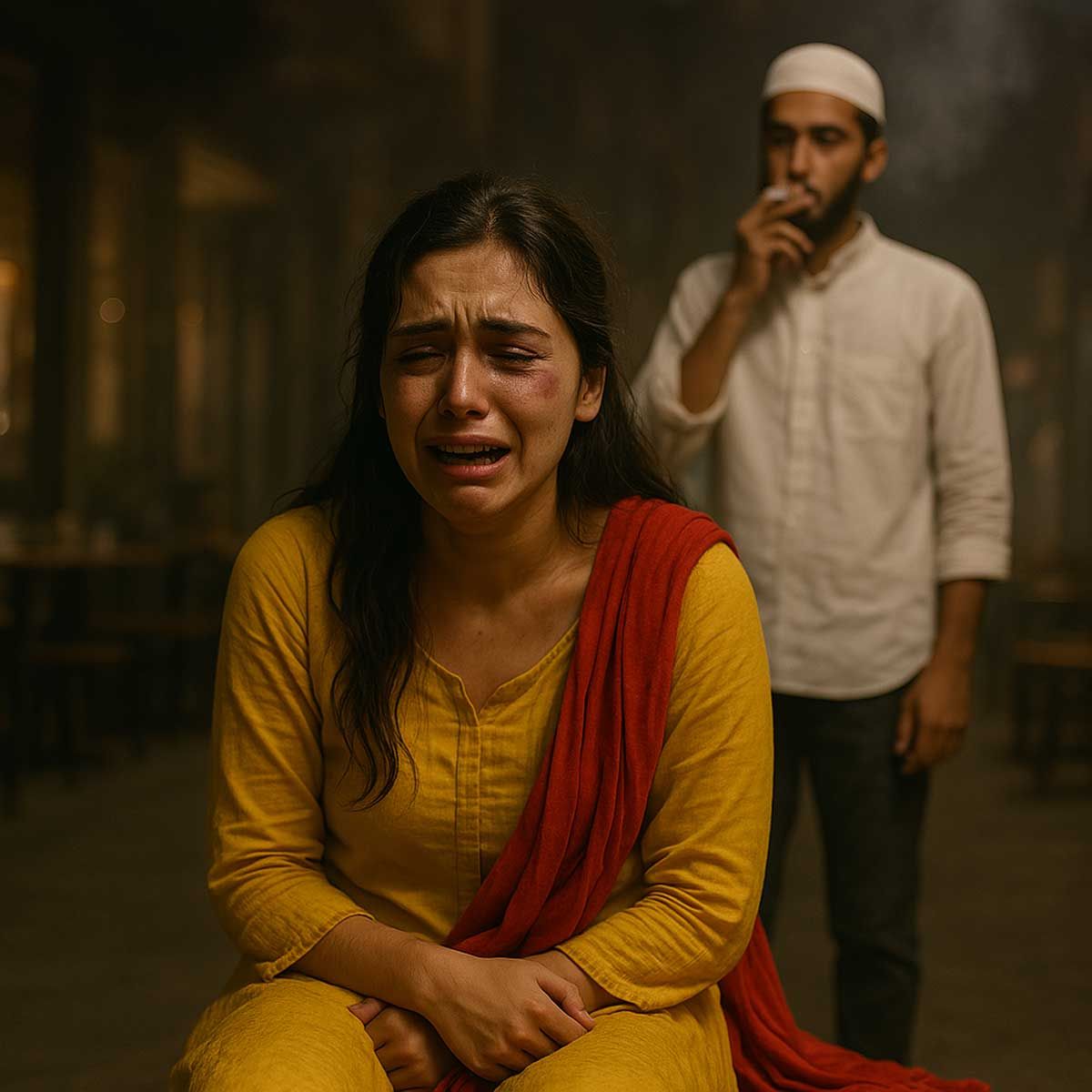More Coverage
Twitter Coverage
Satyaagrah
Written on
Satyaagrah
Written on
Satyaagrah
Written on
Satyaagrah
Written on
Satyaagrah
Written on
JOIN SATYAAGRAH SOCIAL MEDIA
While Narendra Modi's trident, garlands & Kashi Vishwanath rituals spark speculation of wooing Hindu voters for Lok Sabha polls, the truth unveils a profound dedication to Sanatan Dharma; his acts embody ancient traditions & a spiritual vision for Bharat
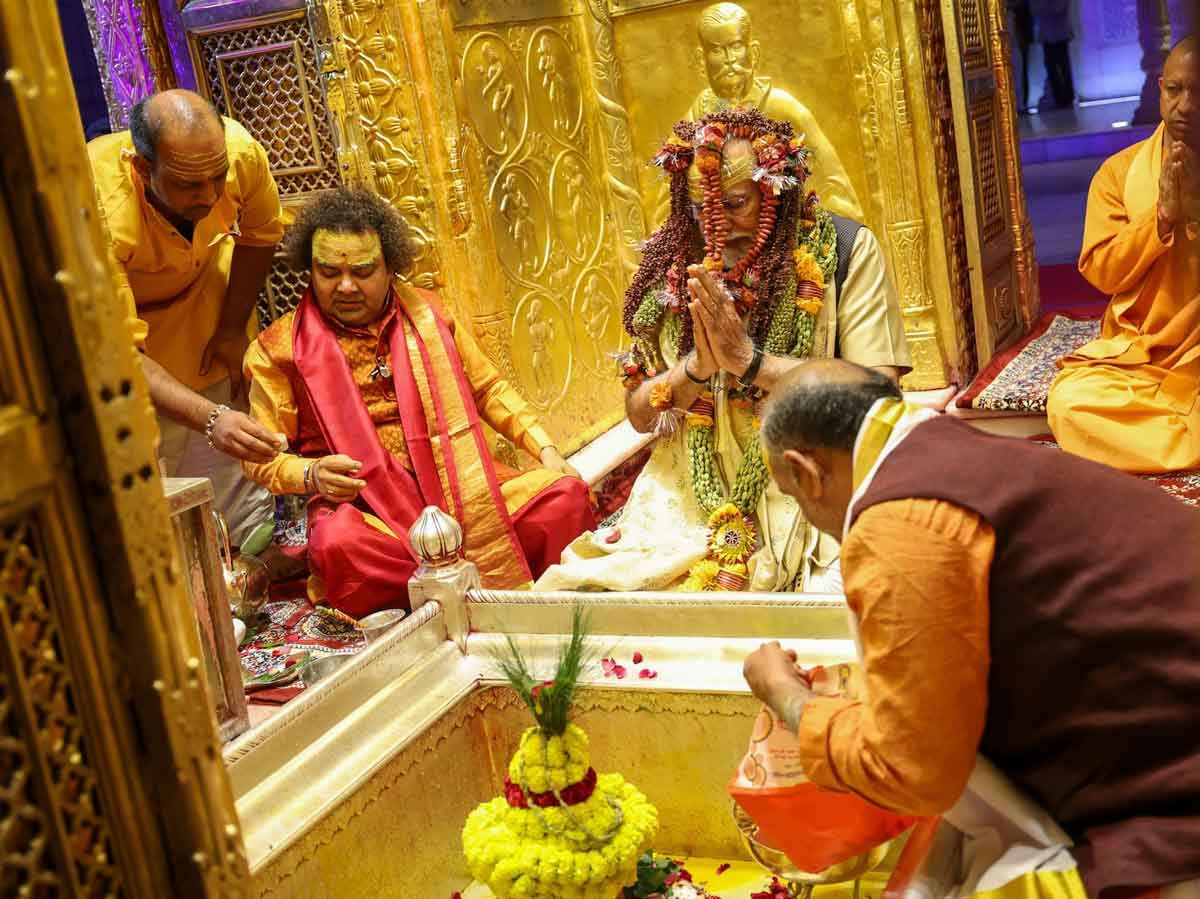
Narendra Modi, the Prime Minister of India, is a man of diverse interests and deep cultural roots, evident in his profound respect for Sanatan tradition. This multi-faceted leader has shown us various aspects of his personality, from being a nature enthusiast who loves exploring the serene beauty of Lakshadweep to an adventurous scuba diver and the Indian Air Force's most esteemed ally, navigating the skies with unmatched valor.
|
Modi's devotion to his faith is remarkable, embodying a true devotee's spirit, whether in reverence for Lord Rama or as an ardent worshipper of Lord Shiva, known as Sivasambhu. His appearance at public gatherings often reflects his deep-rooted spiritual beliefs. A vivid image of him, with a tilak adorning his forehead and a trishul in hand, captivates many. Recently, an event in Varanasi brought this aspect of Modi to light in a uniquely profound manner.
During a night filled with fervor in Varanasi, amidst a crowd eagerly watching, Prime Minister Modi was seen in what could only be described as a new avatar. He performed puja at the Kashi Vishwanath temple, an act that not only demonstrates his personal faith but also his deep connection with India's spiritual heritage. The sight of Modi, adorned with Tripundak Tilak and enveloped in multiple garlands, became a sensation online, leaving many to wonder about the significance behind these rituals and his attire.
The underlying meaning of these actions is deeply tied to Modi's aspirations and spiritual commitments. "According to the archaka (priest) of Shri Kashi Vishwanath Temple, PM Narendra Modi took sankalp (a vow) to become Prime Minister of India for the 3rd time inside the sanctum sanctorum of Kashi Vishwanath Temple."
After making his sankalp, he worshipped Lord Shiva with Panchopachar, Shodashopchar, and Rajopchar rituals, alongside chanting mantras from Rudra Sukta.
Prime Minister Narendra Modi's spiritual journey and his deep-seated respect for Sanatan tradition have always been integral to his identity. This connection was once again highlighted during a significant ritual he performed at the Kashi Vishwanath Temple. Prof. Nagendra Pandey, the President of the Kashi Vishwanath Temple Trust, elaborated that the act of worshipping Lord Shiva, which includes the recitation of the Rudrasukta mantra, is a sacred tradition aimed at the fulfillment of wishes.
|
This practice isn't new to Modi, who has demonstrated his devotion through similar pujas in the past. He first conducted the Shodashopachar puja, a detailed worship ritual for Lord Shiva, back in 2014 and then again in 2019. Both times, his intention was to seek blessings for victory, showing a blend of his spiritual pursuits and his aspirations in the political realm.
The significance of the garland adorned by Modi during the puja is steeped in Hindu beliefs. It is said that cardamom, a key element of his garland, is associated with Venus and is believed to enhance spirituality, promote progress, and provide advanced knowledge. More so, the cardamom garland is thought to fulfill wishes and increase spirituality, resonating with Modi's own journey and his wish for victory and prosperity for India.
Moreover, the application of Tripund on the forehead, as Modi was seen during the ceremony, holds profound meaning. It symbolizes mental peace and protection from negative thoughts. The Shiva Purana mentions that a devotee who wears Tripund cannot be affected by evil forces, thereby bringing positive energy, happiness, and peace into life.
On that day, images of Narendra Modi holding a trident and adorned with this special garland made rounds on social media, symbolizing his deep reverence for Hindu traditions and his role as a leader who seeks divine guidance and blessings in his service to the nation. This imagery not only underscores his personal faith but also his connection with the cultural heritage of India, portraying a leader whose spiritual beliefs guide his actions and leadership.
|
On a day filled with spiritual significance and public attention, an image of Prime Minister Narendra Modi holding a trident in his hand captured the imagination of many. While some speculated that this act was merely a gesture to appeal to Hindu sentiments, the truth rooted in tradition and belief tells a different story.
The trident, or Trishul as it is known in Sanskrit, holds profound spiritual meaning within the Hindu faith. It's not merely a symbol of divine authority but also represents the destruction of negativity and the guiding path towards a spiritual life. "Wearing Trishul removes negativity" - it's believed to dispel the negative energies surrounding a person, urging them towards spiritual awakening. This sacred symbol doesn't only clear the path from negativity but also humbles a person by eliminating pride, thus bringing them closer to the divine. It signifies a departure from the materialistic pursuits of life, leading one to realize the eternal truth.
This practice and belief are deeply ingrained in the Guru-shishya (teacher-disciple) tradition, a lineage where knowledge and wisdom are passed down through generations. It's a tradition celebrated in the teachings of Swami Atmasthananda, the revered former president of the Ramakrishna Math and Mission, headquartered in Belur. Swami Atmasthananda holds a special place in Prime Minister Modi's life, being the monk who once advised him to embrace the path of politics.
The teachings and practices around the Trishul and Tripunda (a specific type of Tilak or mark worn on the forehead) are supported by the ancient texts of the Shiva Puranas. These texts elucidate that "devotees who wear Tripunda on their foreheads are shielded from evil forces". The presence of the Tripunda is said to infuse life with positive energy, fostering an environment of happiness and peace.
|
On the day the photo of Modi with the trident went viral on social media, there were discussions and assumptions about its intent, especially with the Lok Sabha polls on the horizon. Many believed the image was meant to draw the attention of Hindu voters. However, the essence and the teachings behind the symbolic gesture speak to a deeper, spiritual motive rather than a mere political strategy.
In a world where the lines between the spiritual and the political often intersect, Prime Minister Narendra Modi's recent actions at the Kashi Vishwanath Temple have sparked a broad spectrum of reactions and interpretations.
The trident, or Trishul, is not merely a weapon in Hindu mythology but a profound emblem of spiritual principles. It symbolizes the destruction of negativity and the guiding of an individual towards a more spiritual existence. The Trishul is said to obliterate a person's ego, paving the way for a closer connection with the divine. It represents the shedding of materialistic bindings and the awakening to spiritual truths. Such beliefs underscore the actions of individuals who seek to embody the essence of spirituality in their lives.
This narrative gains an additional layer of depth when considering Narendra Modi's connection to Swami Atmasthananda. The revered monk and former president of the Belur-headquartered Ramakrishna Math and Mission, who had a significant influence on Modi, steering him towards politics. The practices witnessed, including Modi's wielding of the Trishul, resonate with the Guru-shishya tradition—an ancient Indian practice where knowledge and principles are passed down from teacher to student, in this case, embodying spiritual teachings in the realm of public service.
Furthermore, the event's significance is amplified by its location—Varanasi, not only a city with profound spiritual importance but also Modi's Lok Sabha constituency. This intertwines the spiritual gesture with political undertones, as the act of puja at the Kashi Vishwanath temple is seen by some as part of Modi's political engagement. The presence of Yogi Adityanath, the Chief Minister of Uttar Pradesh, during the rituals, adds a layer of political relevance to the proceedings.
The imagery of Modi holding the trident, thus, becomes a confluence of spiritual symbolism and political strategy. While some may view this as an appeal to the Hindu electorate ahead of the Lok Sabha polls, others perceive a deeper, more personal commitment to spiritual practices and beliefs. This duality of interpretation highlights the complex persona of Narendra Modi—a leader navigating the realms of spirituality and politics with equal fervor.
|
Panchopachara Puja: Understanding Its Method and Significance
Panchopachara Puja holds a special place in the heart of Hindu worship practices, emphasizing the profound impact of performing rituals as guided by the ancient wisdom of our scriptures. This method of puja harnesses the Sankalp-Shakti, the powerful energy of resolution from our omniscient sages. It teaches us that absolute devotion and genuine feelings towards the deity are crucial. Without love and devotion, our efforts to connect with the divine might not fully reach them. This is because, at its core, the divine craves our future and well-being.
The essence of worship, especially in the context of Hinduism, lies in adhering to the methods prescribed in the scriptures. This adherence isn't merely about following rituals but engaging in them with a heart full of faith towards the deity. Such worship aligns with the expectations of the deity and is considered true 'worship'. The scriptures have always encouraged us to engage in saguna (physical) worship through meticulously described puja vidhis (ritualistic worship), promising that if we do so correctly, we will earn the deity's blessings.
Panchopachara Puja, specifically, is a method that embodies this principle beautifully. It involves a heartfelt engagement with the divine through a series of offerings that include fragrance, flowers, incense (frankincense), aarti (light ceremony), and naivedya (food offering). This approach not only pleases the deity but also fosters a spiritual connection between the worshipper and the divine.
Delving deeper into what Panchopachara entails, it's fascinating to learn that this method begins with the worship of five principal deities: Shri Ganesh ji, Lord Shankar, Durga Mata (Bhavani, Parvati), Lord Vishnu, and Sun God. The worship through Panchopachara involves five specific offerings to any chosen deity, encapsulated beautifully in the mantra:
गन्धं पुष्पं तथा धूपं दीपं नैवेद्यमेव च ।
अखंडफलमासाद्य कैवल्यं लभते धु्रवम् ।।
This signifies that through the offerings of scent, flowers, incense, a lamp, and naivedya, a worshipper can achieve a state of blissful isolation or moksha, confirming the belief that the divine eagerly awaits these acts of devotion. Through such practices, the Panchopachara method enlightens us on the path to divine blessing and spiritual fulfillment.
|
Mudras of Panchopachar Method: A Guide to Devotional Gestures
The Panchopachar method, a sacred approach to worship in Hinduism, encompasses not just offerings but also specific gestures or mudras that are deeply symbolic, facilitating a more profound connection between the devotee and the divine. Within the scriptures, five distinct mudras correspond to the Panchopachar method, each dedicated to presenting worship materials in a manner that the Gods and Goddesses graciously accept.
Gandha Mudra (गंध मुद्रा)
Gandha Mudra is a gesture involving the fingers and thumbs of both hands, specifically designed for the offering of fragrances like sandalwood. To form the Gandha Mudra, the thumb and little finger are brought together. The ritual begins by applying sandalwood with the ring finger, followed by offering turmeric and then kumkum at the deity's feet using a pinch between the thumb and ring finger of the right hand. This gesture symbolizes the offering of scents that are pleasing to the divine, embodying purity and devotion.
Flower Mudra (पुष्प मुद्रा)
The Flower Mudra is created by positioning the index finger at the base of the thumb, a gesture meant for the offering of flowers to the deity. This mudra guides the devotee to present their beloved flowers, such as Bilva leaves for Lord Shiva or Durva and red flowers for Lord Ganesha, in a respectful manner. Importantly, flowers should be offered at the feet of the deity, not on their head, with the stem facing the deity and the petals facing the devotee, signifying humility and reverence.
|
Dhoop Mudra (धूप मुद्रा)
Forming the Dhoop Mudra involves placing the thumb at the root of the index finger. This gesture is associated with the offering of incense, a practice that invites the devotee to present aarti to the deity with incense sticks carrying fragrances dear to them. During the offering, it's crucial not to spread the hands wide but to ensure the incense is shown in a manner that evokes the shape of 'Om,' symbolizing the universe's essence and the unity of the devotee with the divine.
Deep Mudra (दीप मुद्रा)
Deep Mudra involves the connection of the thumb to the root of the middle finger, a gesture specifically for the offering of light during Deep Aarti. While engaging in this sacred act, it's essential to adhere to certain practices to ensure the ritual's sanctity is maintained:
- Aarti should be performed slowly, circling the deity three times to invoke the deity's presence and blessings.
- One should never light one lamp from another, preserving the purity of each flame.
- Distinction is crucial when dealing with different types of lamps; an oil lamp should not be used to light a ghee lamp.
- It is advisable to use a new wick daily for the oil lamp, symbolizing renewal and continuous devotion.
|
Naivedya Mudra (नैवेद्य मुद्रा)
The Naivedya Mudra is formed by bringing together the thumb and the root of the ring finger. This gesture is associated with the offering of food or Naivedya to the deity, and there are specific guidelines to ensure the offering is made respectfully and correctly:
- Salt should not be included in the Naivedya plate, as it is traditionally omitted from offerings to the gods.
- The food intended for Naivedya should be covered before it is offered, signifying respect and purity.
- Before presenting the Naivedya, one should pray to the presiding deity, then make a square circle with water on the ground in front of the deity and place the plate of Naivedya within it. This ritualistic preparation helps demarcate the sacred space for the offering.
- A circle of water is drawn around the plate once placed, creating a symbolic boundary and sanctifying the offering.
- The act of offering Naivedya is imbued with the sentiment that the food reaches the deity and is accepted by them, fostering a deep connection between the devotee and the divine.
- When offering Naivedya, it's also important to provide Panch Gras to nourish the five Pranas, further emphasizing the holistic approach to divine offering. Adopting the lotus position during this offering symbolizes the grass posture, indicating readiness and respect.
|
Shodashopachar Worship: Detailed Rituals and Their Scriptural Basis
Shodashopachar Puja is a comprehensive and detailed worship method in Hinduism, involving sixteen specific acts of devotion, each grounded in ancient scriptures. To aid understanding, the scriptural basis for these acts is detailed alongside their description.
1. First Remedy: Invoking the Deity (Calling the Deity)
The initial step in Shodashopachar worship involves the devout invocation of the deity. The devotee prays for the deity to arrive with their body, family, weapons, and power to accept the worship after being established in the idol. This act of 'invoking' signifies complete surrender and devotion. During invocation, the worshipper holds sandalwood, Akshat (unbroken rice grains), and basil leaves or flowers in hand. Following the invocation, with the deity's name and ending with 'Namah', the devotee offers these items to the deity, signifying respect and welcome.
For instance, the invocation for different deities varies as per their attributes and stories. For Sri Ganapati, one would say 'Sri Ganapataye Namah.', for Sri Bhavanidevi, 'Sri Bhavanidevyai Namah.', and for the Vishnu Panchayatan (a group of five deities including Sri Vishnu, Shiva, Sri Ganesha, Devi, and Surya), 'Sri Mahavishnu Pramukh Panchayatan Devatabhyo Namah.' is recited.
2. Second Treatment: Providing a Seat (a Place to Sit) to the Deity
Upon the deity's arrival, the worshipper visualizes offering a beautiful seat to the deity. Favorite leaves, flowers (e.g., Durva for Lord Ganesha, Bel for Lord Shiva, Tulsi for Lord Vishnu), or Akshat are offered, symbolizing hospitality and reverence.
3. Third Treatment: Padya (Giving Water to Wash the Feet of the Deity; Pada-prakshalana)
In this act, the deity is envisioned in a copper vessel, and the worshipper offers water for the deity's feet using warm water. This gesture is a sign of humility and service to the divine.
4. Fourth Treatment: Agarhya (Offering Water to the Deity for Washing Hands; Hand-washing)
Water is taken in an Aachmani (a spoon-like utensil used in Hindu rituals), mixed with sandalwood, Akshat, and flowers, and then offered to the idol's hands. This act purifies the deity's hands and signifies preparation for the puja.
5. Fifth Treatment: Achamana (Giving Water to Rinse the Deity; Mouth-washing)
For Achamana, water mixed with camphor is prepared in an Aachmani and placed in a copper vessel to be offered to the deity. This act symbolizes the cleansing of the deity's mouth, further purifying the idol for the worship rituals that follow.
6. Sixth Treatment: Bath (Offering Water to the Deity)
In this stage, the method of offering water to the deity varies depending on the material of the idol:
- For metal idols, instruments, or shaligrams, water should be directly offered.
- Clay idols require a gentle sprinkle of water from a flower or Tulsi plant to avoid damage.
- Pictures of deities are to be cleaned carefully: first with a dry cloth, followed by a wet cloth, and then again with a dry cloth, ensuring the cloth is clean. A new cloth, if used, should be pre-soaked in water, rinsed, and dried.
The bathing ritual begins with Panchamrit, involving sequential baths with milk, curd, ghee, honey, and sugar, interspersed with water rinses. Following Panchamrit, the deity is bathed with water mixed with sandalwood and camphor, then with scented liquid, and finally with Ushnodak (lukewarm water). The Mahabhishek bath, performed with lukewarm water scented liquid, involves a continuous slow stream of water from the Abhishekpatra. During Mahabhishek, reciting hymns enhances the spiritual experience. After Mahabhishek, perform Achaman with water from a copper vessel and gently dry the idols.
7. Seventh Treatment: Giving Clothes to the Deity
Offering clothes to the deities symbolizes respect and devotion. Two pieces of cotton cloth are presented: one draped around the deity's neck like an ornament and the other placed at the deity's feet.
8. Eighth Treatment: Offering the Deity an Undergarment or Sacrificial Veil (Giving Janeu)
A sacrificial veil or undergarment is offered to male deities, symbolizing purity and sanctity in worship.
|
9-13. From Ninth to Thirteenth Treatment: Panchopachar
These treatments involve:
- Applying fragrance (sandalwood),
- Offering flowers,
- Offering incense or performing aarti with incense sticks,
- Performing lamp aarti, and
- Offering naivedya.
Following the offering of Naivedya, a Deep Aarti and then a Karpoor Aarti are performed, marking the culmination of the ritual offerings.
14. Fourteenth Treatment: Mental Salutation to the Deity
This involves a heartfelt, internal salutation to the deity, acknowledging their presence and grace.
15. Fifteenth Treatment: Circling
After the salutation, the devotee performs a circumambulation around the deity. If space constraints exist, standing in place and rotating three times suffices, symbolizing respect and devotion.
16. Sixteenth Treatment: Mantra Pushpaanjali
The final act involves chanting a mantra and offering an intact flower to the deity. It concludes with seeking forgiveness for any known or unknown mistakes made during the Puja. Finally, applying Vibhuti, performing Tirtha Prashan, and taking Prasad are rituals that seal the worship, embodying surrender and seeking blessings.
These comprehensive steps of Shodashopachar Puja are designed to facilitate a deep connection between the devotee and the divine, ensuring a ritual that is both spiritually enriching and respectful of Hindu traditions.
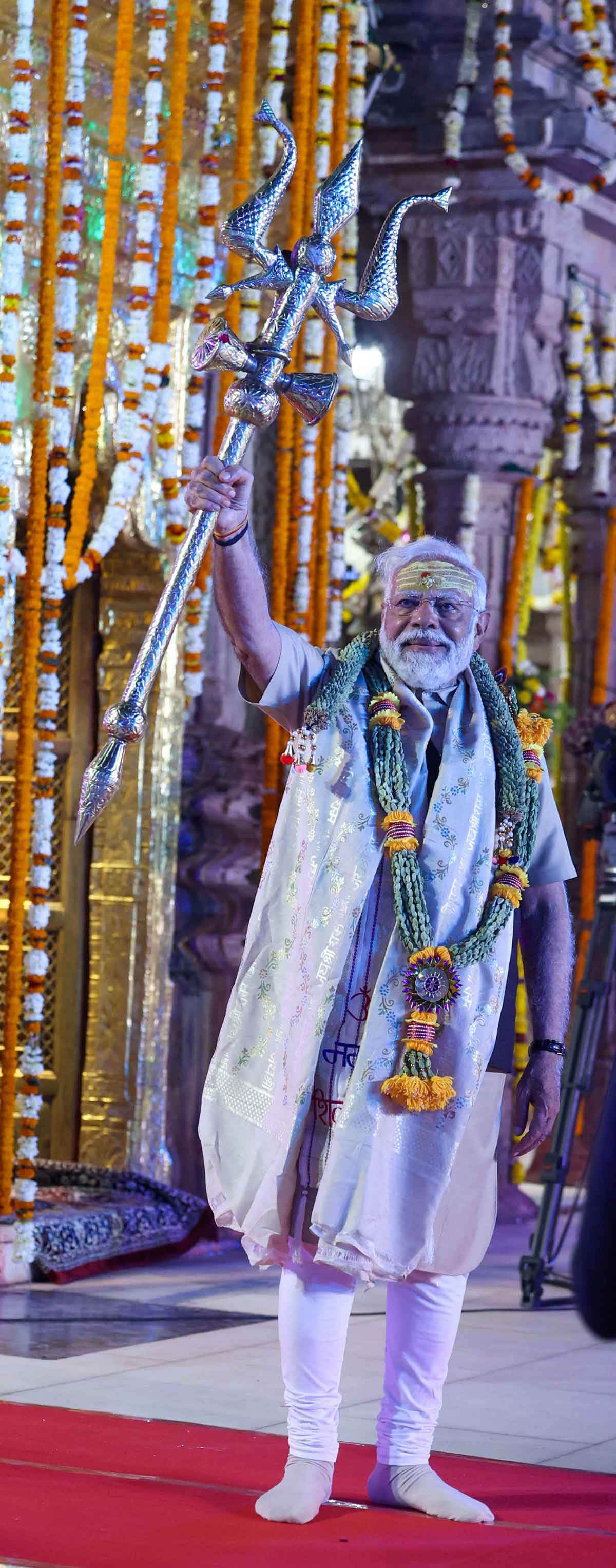 |
 Support Us
Support Us
Satyagraha was born from the heart of our land, with an undying aim to unveil the true essence of Bharat. It seeks to illuminate the hidden tales of our valiant freedom fighters and the rich chronicles that haven't yet sung their complete melody in the mainstream.
While platforms like NDTV and 'The Wire' effortlessly garner funds under the banner of safeguarding democracy, we at Satyagraha walk a different path. Our strength and resonance come from you. In this journey to weave a stronger Bharat, every little contribution amplifies our voice. Let's come together, contribute as you can, and champion the true spirit of our nation.
 |  |  |
| ICICI Bank of Satyaagrah | Razorpay Bank of Satyaagrah | PayPal Bank of Satyaagrah - For International Payments |
If all above doesn't work, then try the LINK below:
Please share the article on other platforms
DISCLAIMER: The author is solely responsible for the views expressed in this article. The author carries the responsibility for citing and/or licensing of images utilized within the text. The website also frequently uses non-commercial images for representational purposes only in line with the article. We are not responsible for the authenticity of such images. If some images have a copyright issue, we request the person/entity to contact us at This email address is being protected from spambots. You need JavaScript enabled to view it. and we will take the necessary actions to resolve the issue.
Related Articles
- Savitri Devi broke into tears when Yogi Adityanath decided to leave for Gorakhpur to take vow of sainthood, and today her eyes contain the same tears brimming with pride Yogi has emerged as a Chief Minister of Uttar Pradesh
- Rise of Shiv Shahi
- PM Modi inaugurates rebuilt Shankaracharya samadhi in Kedarnath and said ‘Adi Shankara brought life to a sleeping civilisation, awakened Bharat to rise above caste boundaries’
- "A foreign voice, an Indian heart": CassMae, a German vocalist, captivates India with her soulful renditions of Indian songs, earning praise from PM Modi, this musical prodigy, despite never visiting India, resonates deeply with Bharat's melodic heritage
- 'Older than history, older than tradition, even older than legend...': The millennia-old history of Kashi
- "Respect is earned. Honesty is appreciated. Trust is gained": A Melody of Respect: American Singer Mary Millben sings the soulful rendition of the Indian National Anthem in a Heartfelt homage to India, touches the feet of Prime Minister Modi at Washington
- "Function of ritual is to give form to human life, not in mere surface, but in depth": Kōlams - traditional Indian Patterns that combine Art, Mathematics & Magic, and refers to the belief that Hindus have a “karmic obligation” to “feed a thousand souls”
- "गुरुर्ब्रह्मा गुरुर्विष्णुः गुरुर्देवो महेश्वरः": Saga of Sant Ramdas, who shaped Maharashtra's spiritual and political landscape, guided Shivaji, and left a legacy of devotion & wisdom in the heart of Hinduism through his profound teachings and life
- "Each festival celebrated is a landmark for our spiritual growth": This week marks the beginning of celebrations for the Tibetan New Year, with Tibetans inside Tibet and around the world marking Losar, with music, dancing, and religious practices
- 21-yr-old girl Bina Das shot Bengal Governor in her convocation programme at Calcutta University, got Padma Shri but died in penury
- Manyavar commercial featuring Alia Bhatt vilifies Hindu wedding ritual Kanyadaan: Why not object Western practice of ‘giving away the bride’ and Nikah (marriage contract)
- "The art of simplicity is a puzzle of complexity": Eureka Moment - Grammatical problem that puzzled Sanskrit scholars for 2,500 years is solved by Indian student Rishi Rajpopat at Cambridge, he decoded a rule taught by the "father of linguistics", Panini
- Hindus need temples today more than ever and here is why
- G20 Summit at Bharat Mandapam unveils India's profound legacy through Panini's 'Ashtadhyayi', the majestic Konark Wheel, ancient arts and more, a riveting testament to India's rich history, a beacon of cultural synergy and global unity in modern times
- Lalitadiya Muktapida: A great successor of Karkota Dynasty who defeated Arabs and subjugated Turks
















